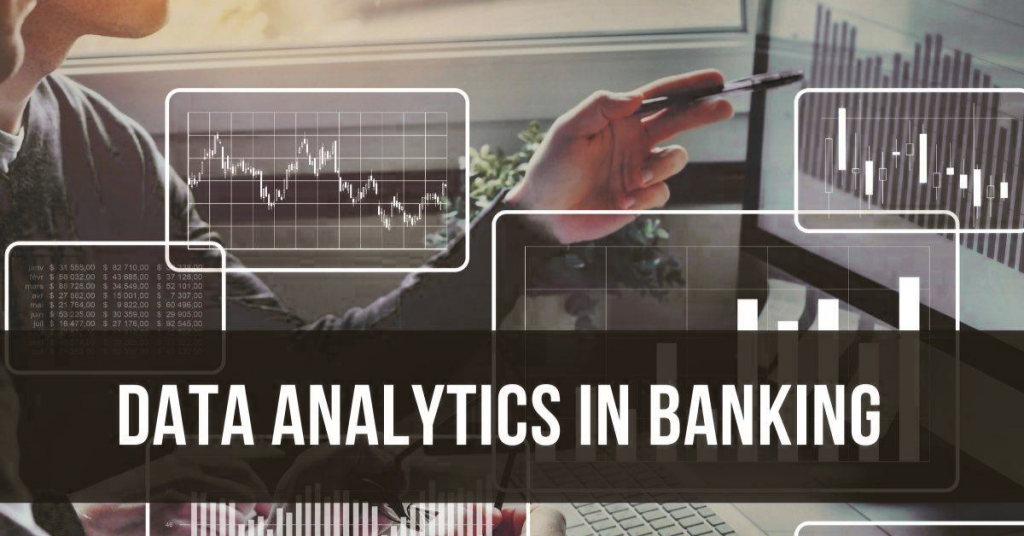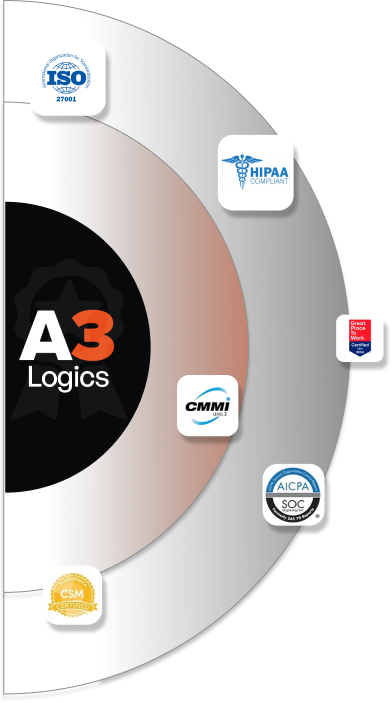Data Analytics in Banking: The banking industry, like other industries, is undergoing a shift precipitated by digital technology at a faster pace. With the increase in fintech innovation, customer expectations shift, and financial operations becoming more sophisticated in nature, traditional banking infrastructures are being pushed to get transformed and adopted towards new technologies. Data analytics is among the most powerful technologies triggering this shift.
Banking revolves around huge volumes of data. On any given day – the global banking sector produces 2.5 quintillion bytes of data, with projections showing it’s going to swell to a gigantic 463 zettabytes by 2025. Handling this stream of data is not just about keeping it; it’s also about extracting valuable insights that can potentially drive financial performance. The role of data analytics in banking sector makes operations more efficient, and most importantly, allows us to serve our customers better.

The application of data analytics in banking is widespread, covering a variety of activities from risk management to marketing, customer care to fraud detection. As the industry shifts towards digital banking and mobile-first approaches, data analytics has emerged as a key driver of transformation.
This article attempts to know the ways in which data analytics is changing the banking sector, its applications, integrations, benefits, drawbacks, and future trends that would define its course in the next couple of years.
Table of Contents
Why Do Banks Need Data Analytics?
Data analytics has always been a bank’s burning issue, and banks are said to be the pioneers in using it. But to reap the full benefits of data analytics in banking, it has to be embedded in every function of the business, from customer understanding and risk management to finance and operations. Data Analytics helps banks remain – rule-compliant, better manage risks, and fight fraud more efficiently.
In addition, it may drive profitability higher by drawing high-potential customers, enhancing product offerings, and helping executives make informed decisions across the board. Let’s take a look at the role of data analytics in banking sector.
> Better Decision-Making
Data Analytics in Banking helps banks make better choices by offering insights based on copious amounts of customer information, transaction history, and outside sources. By being able to forecast customers’ needs and detect impending market patterns, banks can more effectively use resources, improve marketing approaches, and customize their products and services based on customers’ needs.
> Improved Customer Experience
As customers expect quicker, more personalized services, banks are relying on data analytics to improve their interactions. Data Analytics in banking provides valuable insights into client segments, interactions, transactions, and feedback, enabling banks to understand more about their consumers’ needs. This allows for more personalized services, more client satisfaction, and reduced churn.
> Risk Management and Compliance
One of the main areas where data analytics excels in banking is risk assessment. Banks are able to utilize data analytics in monitoring compliance and data gathering and analysis automation. It allows banks to prepare accurate, complete reports that meet all regulatory requirements, saving money and time while being completely compliant.
> Operational Efficiency
Data Analytics in Banking is turning out to be an effective way of increasing operational efficiency in banking. Banks are able to utilize massive data and advanced analytics techniques. This helps them to automate key processes and lower costs. It plays a key role to improve overall performance in a number of operational activities.
One particular use is branch network optimization. Banks can use foot traffic, transaction volumes, and demographic data to make informed data-driven decisions about branch locations, staff levels, and service offerings. This could mean closing underperforming branches, the opening of digital-first branches, or the reallocation of resources to high-growth geographies.
> Competitive Advantage
Data analytics can assist banks in revealing market trends and untapped client needs, enabling them to create new and innovative goods and services. Data analytics provides banks with the opportunity to make better decisions on product development, marketing strategies, and service delivery, enabling them to maintain their competitive edge within a dynamic industry.
Most Important Applications of Data Analytics in Banking

Data analysis is at the root of most of the advancements made in the banking industry. The following are the most typical use cases that illustrate the wide-reaching importance of data analytics in banking:
1. Risk Analysis and Credit Scoring (30% of Use Cases)
Banks must continually assess risk so they can lend responsibly and limit exposure to defaults. Risk analytics leverages historical data, transaction patterns, and even non-traditional data sources (e.g., social media behavior) to make an educated guess at the likelihood of a borrower defaulting. This matters because:
Credit scoring: Traditional credit scores have their limitations. Through data analytics, banks can create sophisticated credit scoring models that examine a customer’s creditworthiness on a greater number of criteria.
Loan risk: By analyzing borrowers’ behavior and history, data analytics in banking can predict the likelihood of loan repayment, allowing banks to better manage loan portfolios.
Investment risk: Banks can apply risk analytics to predict the potential risks and returns of different investments, helping portfolio managers make sound investment decisions.
2. Fraud Detection and Prevention (25% of Use Cases)
Fraud is also a big problem in the banking industry, with fraudsters constantly coming up with new ways to exploit vulnerabilities. Data analytics in banking is also critical in fraud detection and prevention through:
Pattern recognition: By scanning transaction data in real time, banks can recognize unusual patterns that may indicate fraud. For example, if an account of a customer experiences an unusual increase in transactions or withdrawals from odd locations, the bank will flag the activity for examination.
Machine learning algorithms: Machine learning (ML) algorithms are used by banks to identify and anticipate fraudulent behavior. Over time, these algorithms improve in accuracy as they learn from past fraud cases.
Predictive analytics: Banks can anticipate and avoid future fraud attempts using fraud patterns from the past extracted from historical data, making it safer for customers to bank.
3. Personalization & Next Best Action/Offer (NBA/NBO) (20% of Use Cases)
Among the most powerful shifts in banking is the direction towards personalized customer experiences. Banks can offer individualized services, products, and offers based on data analytics to cater to the needs of each customer. By using Next Best Action (NBA) and Next Best Offer (NBO) models, banks can:
Enhance product recommendations: Based on customer preference and transaction history, banks can suggest financial products most particular to the customer.
Maximize marketing: Banks can design personalized campaigns for individual customers based on their financial behavior and interests.
Proactive interaction: By analyzing the data, banks can predict when to interact with customers, whether to lend money, suggest saving, or offer financial advice based on their present financial condition.
4. Operational Efficiency (15% of Use Cases)
With a competitive environment, banks are forced to reduce operational costs while increasing efficiency. Banks can employ data analytics to rationalize operations by:
Workflow optimization: Analysis of internal processes and workflows allow one to recognize inefficiency areas, bottlenecks, and areas where automation can be implemented.
Resource management: By analyzing performance metrics, the banks can staff more effectively, improve branch operations, and ensure that resources find their way to the most critical areas of the business.
Cost savings: Banks can identify cost-saving opportunities through data analytics, whether reducing fraud-related expenses or optimizing energy use at branches.
5. Marketing and Customer Acquisition (10% of Use Cases)
The importance of data analytics in banking allows them to maximize marketing and acquire new clients. Banks employ data analysis to:
Identify the right customers: Banks can make highly focused marketing campaigns based on demographic data, spending history, and customer behavior to target the right customers.
Maximize marketing spending: Data Analytics in banking helps banks measure the return on their marketing efforts, which leads them to spend resources in an efficient way and eliminate wasteful spending.
Customer segmentation: A bank can segment customers based on behaviors, needs, or financial situations so that they can offer them more specific marketing messages and offers.
Key Integrations for Banking Data Analytics

For data analytics to be used effectively, banks must bring together multiple systems and platforms offering full data insights. Some of the integrations critical for banks to use the power of data analytics include:
1. Core Banking Systems
Core banking systems are the backbone of a bank’s operations, carrying customer information, transaction history, and account details. Integrating these systems with analytics tools enables banks to unlock a vast amount of data that can be used to make informed decisions and enhance customer service.
2. CRM Platforms
Customer Relationship Management (CRM) software is essential for monitoring customer behavior, choices, and interactions. Merging these systems with data analytics provides banks with greater understanding of customers’ needs, offers the ability to personalize services, and increases engagement.
3. Operations Management Tools
Integrating operations management tools with data analytics platforms enables banks to streamline internal operations, track key performance indicators, and find inefficiencies in workflows.
4. Security & Compliance Trackers
Security and compliance are high on banks’ lists of priorities. Merging analytics with security and compliance frameworks enables real-time risk monitoring, alerting of suspicious transactions, and anticipatory management of regulatory needs.
5. Client-Facing Apps
Mobile applications and online banking sites produce enormous amounts of data that can yield information regarding customer preferences, interaction, and satisfaction. If these sites are integrated with data analytics in banking, banks can provide a more personalized and smooth customer experience.
6. Accounting/Treasury Systems
Accounting and treasury systems produce essential financial information that can be analyzed to forecast cash flow, find cost-saving opportunities, and maximize investment choices.
7. Financial Data Marketplaces
Merging with external sources of financial data, including market data, economic indicators, and competitors’ benchmarks, enhances internal analytics, offering a more complete perspective of the market environment.
8. Credit Rating Bureaus
Integration with credit rating bureaus improves the capacity of a bank to evaluate customers’ creditworthiness and better manage risk.

Advantages of Data Analytics in Banking
Data Analytics in banking is not merely about embracing new technology; it’s about revolutionizing how banks do business, engage customers, and make strategic choices. Let’s take a look at a few of the most important advantages that analytics has to offer the banking industry:
1. Improved Customer Experience
One of the greatest benefits of data analytics in banking is enhancing customer experience. In the competitive market of today, banks must do more than what is typical of traditional customer service and provide a seamless, personalized experience to maintain customers. This is how data analytics accomplishes that:
Personalized Products: Through the analysis of customer behavior, preferences, and transaction history, banks can suggest products and services that are tailored to individual requirements. This may vary from proposing customized loans or credit cards to suggesting financial planning tools.
Real-Time Insights: Through real-time data analytics, banks can address customer queries, problems, or concerns in real time. This minimizes waiting times, enhances customer satisfaction, and enhances overall service quality.
Omnichannel Engagement: Banks are able to monitor customer interactions at multiple touchpoints (mobile applications, websites, branches, call centers) using data analytics in banking. This provides a holistic view of the customer and enables banks to communicate more effectively and consistently on all channels.
2. Enhanced Risk Management
In a risk-driven industry—be it credit risk, operational risk, or fraud risk—data analytics is a key driver in enhancing how banks manage and reduce these risks. The following are some of the benefits of data analytics in banking:
Predictive Risk Analytics: Historical data is analyzed and risk patterns are determined by banks’ predictive models to identify and anticipate expected risks before they materialize. For instance, predictive models can determine a customer’s default risk on a loan based on past financial conduct.
Real-Time Fraud Detection: Banks utilize data analytics services, in conjunction with machine learning, to detect fraud in real-time. By identifying patterns in transactions, banks are able to flag suspicious transactions instantly, preventing financial loss and safeguarding customer assets.
3. Operational Efficiency
Operational effectiveness is vital in the banking sector, given the added pressure to cut costs while delivering high-quality service. Data analytics in banking can make operations lean and cost-saving through:
Process Optimization: Banks are able to review workflow data and determine inefficiencies or bottlenecks within operations. This may involve streamlining loan approval processes, onboarding, or communications between departments.
Cost Optimization: Analytical insights enable banks to allocate resources better, minimize unnecessary operating expenses, and scrap duplicated processes. For instance, predictive models can facilitate the deployment of personnel during busy hours or anticipate demand for specific services, minimizing downtime and operating delays.
Automation: By merging data analytics with automation platforms (e.g., robotic process automation), banks can more effectively process recurrent tasks, leaving resources to be deployed on more strategic efforts.
4. Regulatory Compliance
Regulatory compliance is a key feature of the banking sector. Failure to comply can attract hefty fines, legal penalties, and an injured reputation. Data analytics in banking assists banks in staying compliant in a number of ways:
Regulatory Reporting: Analytical tools can make it easier to prepare reports that need to be submitted to regulators. Automation of this task makes it possible for banks to maintain the accuracy and timeliness of submissions, which minimizes compliance failures.
Monitoring and Alerts: Real-time monitoring of compliance activities, including transaction monitoring for suspicious activity, anti-money laundering (AML) practices, and industry regulations, can be facilitated by data analytics.
Audit Trail: Data analytics can also generate an audit trail, which makes it simpler for banks to prove compliance during regulatory reviews and audits.
5. Strategic Marketing and Sales
Data analytics is revolutionizing the way banks engage in marketing and customer acquisition. Banks can utilize analytics to:
Customer Segmentation: Segmentation of their customer base by behavior, demographics, and needs enables banks to customize marketing to suit specific groups. For instance, marketing campaigns for young professionals can be different from those aimed at retirees.
Optimized Campaigns: Insights enabled through data allow banks to gauge the performance of their marketing. By monitoring customer response, conversion rate, and engagement level, banks can optimize their campaigns to maximize ROI.
Cross-Sell and Up-Sell Opportunities: Data analytics enables banks to determine potential cross-selling and up-selling opportunities through the analysis of customer behavior and patterns of transactions. For example, a customer with a savings account can be provided with investment products following an analysis of their financial activity.
Challenges of Implementing Data Analytics in Banking
While the advantages are apparent, their adoption in the banking industry has their own limitations. Let us discuss some of the major challenges facing banks in their adoption of these technologies:
1. Data Privacy and Security
Banking institutions are repositories of sensitive personal and financial information, and thus data privacy and security are among the primary concerns. But with banks amassing more data, they are also exposing themselves to possible data breaches and cyberattacks. Some of the challenges are:
Data Protection Regulations: It can be challenging to comply with data privacy regulations like GDPR (General Data Protection Regulation) and CCPA (California Consumer Privacy Act). Banks will need to make sure that they are complying with these regulations and using data for analytics as well.
Data Encryption: It is vital to ensure that the data is encrypted when moving and when stored, so customer trust and regulatory requirements are met.
Cybersecurity: With data analytics solutions becoming increasingly integrated with banking systems, chances of hacking and cyber-attacks escalate. Banks must invest in strong cybersecurity infrastructure to safeguard sensitive data.
2. Data Quality and Accuracy
The quality of the data determines how good data analytics is. Poor-quality data can result in poor conclusions, which affect decision-making. Some of the major challenges here are:
Data Silos: The data tends to live in various systems within the organization—core banking, CRM, operations management software, etc. It can be challenging to integrate data from these silos, and there could be inconsistencies.
Data Cleansing: Validating data as accurate, complete, and standardized takes a lot of time but is a required step. Bad-quality data defeats the purpose of analytics and potentially results in incorrect risk analyses or customer analysis.
3. Integration with Legacy Systems
Most banks have legacy systems that were not established to support contemporary data analytics tools. The legacy systems can hamper the easy incorporation of new technologies, causing issues such as:
Data Transfer: Legacy systems could be incompatible with contemporary analytics platforms, making it tough to transfer data from one to another.
High Costs: Upgrading or replacing legacy systems can be expensive and time-consuming, making it a significant hurdle for many banks, especially smaller institutions.
Scalability Issues: Legacy systems may not be able to scale to meet the growing demands of big data and analytics. This could limit the bank’s ability to analyze large volumes of data in real time.
4. High Implementation Costs
The initial cost of investing in 4 types of data analytics technologies can be high. Banks need to invest in:
Software and Tools: Procuring and integrating analytics platforms, machine learning software, and artificial intelligence systems can be expensive.
Talent and Training: Recruiting data scientists, analysts, and IT people who have the right skills to work with analytics tools is a major expense. Moreover, the current employees may need training to familiarize themselves with new technologies.
Infrastructure: Banks must have the proper infrastructure in place to facilitate the processing and storage of big data, such as cloud computing, databases, and computing capacity.
5. Regulatory Compliance
As financial services grow increasingly data-driven, the regulatory environment is similarly evolving. Banks must comply with myriad complexities while balancing security and innovation. Challenges include:
Regulatory Standards: Banks must remain current with recent regulatory regulations that impact the utilization of data, including data privacy regulations and sector-specific norms.
Audit Requirements: Data analytics in banking should be transparent and have the capability of creating audit trails for satisfying regulatory requirements.

The Future of Data Analytics in Banking
As technology continues to evolve, Data Analytics in Banking will change in ways that bring even more opportunities for innovation and greater efficiency. Some of the trends in the future include:
1. AI-Powered Decision-Making
Artificial intelligence (AI) will be a key driver of data analytics in banking. Through the use of AI together with analytics, banks will be able to automate decision-making, better assess risk, and enhance their ability to detect fraud. AI can be applied to forecast customer needs and personalize services at scale.
2. Hyper-Personalization
As customer expectations keep on growing, hyper-personalization will gain momentum in banking. Through scrutiny of large sets of customer data, banks will provide highly customized experiences that extend beyond product recommendations to encompass personalized financial guidance, offers, and even customer service interactions.
3. Blockchain for Data Integrity and Security
Blockchain technology is being widely employed to secure data integrity and protection. In the future, banks can implement blockchain for more secure processing of transactions and immutable records of customers’ data for avoiding fraud and maintaining transparency.
4. Open Banking Ecosystems
Open banking, where third-party providers can access customer information (with permission), will facilitate more innovative financial services and products. Data analytics will be central to this ecosystem, giving banks and fintech firms insight into customer behavior and enabling them to create improved services.
5. RegTech Adoption
Regulatory technology (RegTech) will expand as banks seek to automate compliance procedures. Data analytics will be combined with RegTech tools to track transactions, identify discrepancies, and enforce compliance in real time.
6. Cross-Border Expansion
As banks seek to expand globally, data analytics will play an important role in managing varying regulatory landscapes, customer needs across geography, and maximizing cross-border operations.
7. Human-Centered Design
Lastly, human-centric design will inform the creation of analytics software. The emphasis will be on developing more user-friendly, intuitive interfaces that will allow employees at all levels within the bank to effectively utilize data in the decision-making process.
Conclusion
The data analytics revolution is revolutionizing the banking industry, making operations more efficient, intelligent, and customer-centric. From individualization to risk management, fraud prevention to compliance, data analytics provides banks with the means to not only survive but thrive in a dynamic environment. But to realize the full potential of analytics, banks will have to overcome challenges. These challenges are data privacy, system integration, and compliance.
In the years ahead, technologies like AI, blockchain, and open banking will continue to drive innovations in data analytics banking. Particularly towards more secure, personalized, and convenient banking.

Why A3Logics for Data Analytics Services?
A3Logics offers cutting-edge data analytics solutions that empower banks and financial institutions to tap their data potential. With expertise in AI, machine learning, and big data analytics, A3Logics offers tailored solutions that enable smarter decision-making, improve customer interaction, and maximize operating efficiency. Be it sophisticated fraud prevention models or designing personalized financial products, A3Logics has the tools and expertise to help your bank succeed in the era of data.





